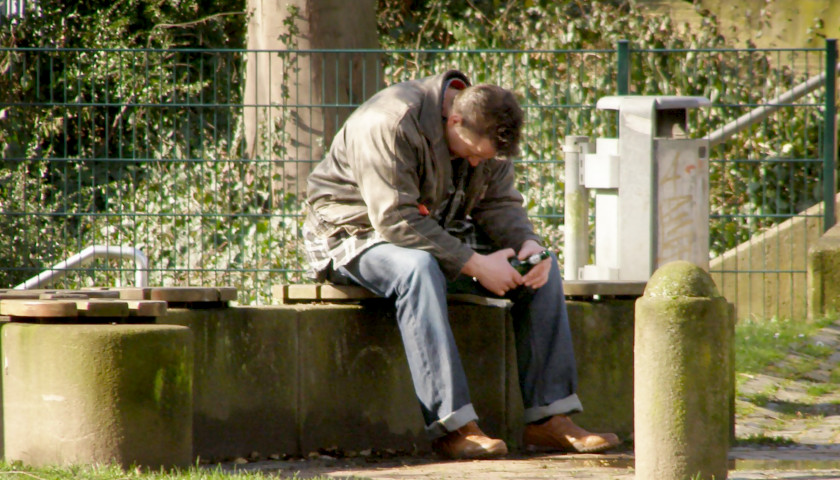by Robert Romano
Don’t look now, but U.S. labor markets appear to be churning in the wrong direction, as the unemployment rate jumped to 3.9 percent in February, and the unemployment level hit a new high for this cycle at almost 6.5 million, up 760,000 from its low this cycle of 5.7 million in Dec. 2022, according to the latest data from the Bureau of Labor Statistics.
Looking at the overall employment level, that peaked at 161.86 million in Nov. 2023 on a seasonally adjusted basis. Now it’s at 160.96 million in Feb. 2024. That’s 898,000 jobs lost in just three months.
The data mirrors what we see in terms of seasonally adjusted unemployment continued claims, which bottomed at 1.29 million in Sept. 2022 and are now up 610,000 to the current level 1.9 million as Feb. 24.
That has come as inflation has declined from its June 2022 high of 9.1 percent annual rate down to 3.1 percent in Jan. 2024. Prices are still increasing, but not as fast as they were two years ago.
This is the classic inverse relationship: When the economy overheats from inflation, spending slows down, price increases slow down and then unemployment goes up, resulting in an economic slowdown and ultimately a recession as the cycle ends. The same thing is happening now, the question will be how severe the correction will be — and when it will be completed.

In his State of the Union address on March 7, President Joe Biden noted the slowdown in inflation and promised that “The landing is and will be soft.” He might be right. In its Dec. 2023 economic projections, the Federal Reserve stated the unemployment rate would hit 4.1 percent this year.
That’s an implied another 400,000 more unemployed this year, taking the number up to 6.86 million unemployed, with an overall increase 1.16 million in unemployment from the Dec. 2022 low.
And put atop the job losses already seen on the employment level, could mean 1.4 million to 1.5 million lost since peak employment was seen in Nov. 2023, likely by election day, if the Fed’s projections are correct. Now, compared to the last two recessions, which were gargantuan — the financial crisis and Great Recession of 2008 and 2009, and the Covid recession, with 8 million and 25 million of jobs lost, respectively — that would be a much smaller correction.
That would also be smaller than when the dotcom bubble popped in the late 1990s and a recession was experienced in 2001 and 2002. Then, almost 2.1 million jobs were lost from peak employment in March 2001 to the bottom of the labor market in Jan. 2002, from almost 137.8 million down to 135.7 million, although the unemployment rate would not peak until June 2003 at 6.3 percent.
Or it could be worse. At the high end of its projections, the Fed sees unemployment getting as high as 4.5 percent in 2024 and 4.7 percent in 2025. If so, that could mean another 1.1 million jobs lost this year, and a further 300,000 or so in 2025, taking the overall correction up to 2.3 million jobs lost.
That makes recessions and slowdowns, although cyclical, a matter of magnitude — and time. The landing might indeed be soft compared to some other recessions, but you also might not find out about it for another year or two.
A good indicator to watch on that front remains the spread between 10-year and 2-year treasuries. This spread tends to invert prior to recessions, and then uninverts as the unemployment rate rises. At -0.38 percent as of this writing it has not yet un-inverted, but is much above its -1.07 and -1.08 percent readings in March and July 2023, respectively.

In that time, unemployment has rising from 3.4 percent in April 2023 to its 3.9 percent level today — like clockwork. Although, looking back on past cycles, the size of either the inversion or un-inversion does not appear to matter much, as they simply signal where we are in the cycle.

In this case, it shows that we’re likely past peak employment, or getting past it, right in time for the 2024 election. That seems to show a slowdown or recession on the horizon, the warning signs are there, but it might not officially be reported until after you vote. As usual, stay tuned.
– – –
Robert Romano is the Vice President of Public Policy at Americans for Limited Government Foundation.
Photo “Unemployed” by Erich Ferdinand CC2.0.






All the NGO’s of the Tent Partnership have no problem placing their undocumented in good paying jobs around the country.